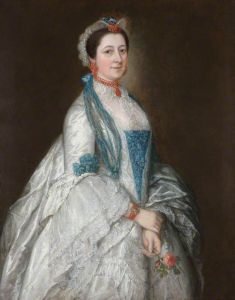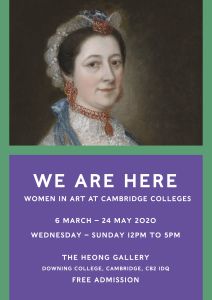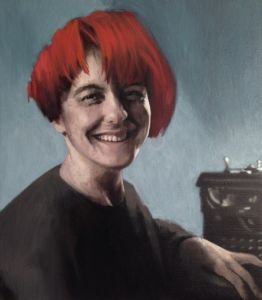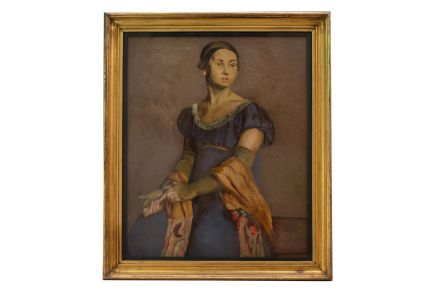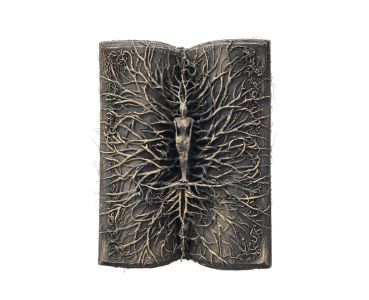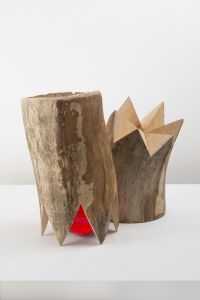We Are Here: Women in Art at Cambridge Colleges
We Are Here: Women in Art at Cambridge Colleges
Open by PRE-BOOKING ONLY until 23 August 2020.
PLEASE READ CAREFULLY BEFORE BOOKING
- Entrance will be to the Gallery only. Visitors are not permitted to enter other parts of Downing College.
- You must arrive within half an hour of the start time of your booked time slot.
- Groups of more than 3 people are not permitted.
- Face coverings must be worn over the nose and mouth at all times while in the Gallery.
- Contact details must be provided for Track and Trace purposes upon entering the Gallery. Details will only be used in case of a confirmed infection.
- Visitors must use hand sanitiser provided upon entering the Gallery.
- Visitors must keep 2 metres apart. Floor signs will be in place to help judge distance.
- A one-way system will be in operation throughout the Gallery.
- There are no toilet facilities for visitors.
Watch a virtual tour of the exhibition
Cambridge Colleges have a complex history when it comes to women’s education. Today, when all Colleges accept women as full members, it is difficult to contemplate that the last all-male college went mixed as late as 1988. The first women undergraduates crossed the threshold of Downing College in October 1980, a full eleven years after the first human had landed on the moon – and eight years after Churchill College, King’s College, and Clare College had first admitted women in 1972. It wasn’t that long before, in 1948, that the University of Cambridge became the last university in Britain to grant women degrees, after over half a century of lobbying by Girton College, Newnham College, and their supporters.
What though, does women’s education have to do with art? A little understood aspect of College life is that the living and learning areas of Colleges are decorated with works from College art collections. Amassed over time through gifts and commissions, most College art comprises portraits of masters, fellows, and benefactors, alongside artworks given or bequeathed by alumni. It is no surprise that, in former all-male colleges, the art on the walls is predominantly male – made by, of, and for men. While this might reflect the historical make-up of the Colleges, there has been an increasing awareness that the art on the walls must reflect the residents of the halls.
WE ARE HERE looks at how women, both as subjects and makers of art, have made their way into College art collections and explores the transformative power of art in making spaces more inclusive and accessible.
PARTICIPATING COLLEGES
Churchill College • Darwin College • Downing College • Girton College • Jesus College • King’s College • Murray Edwards College • Newnham College
ARTISTS
Cathy de Monchaux • Dame Elisabeth Frink • Thomas Gainsborough • Duncan Grant • Lady Christiana Herringham • Lubaina Himid RA • Claerwen James • Mary Kelly • Henry Lamb • Juliette Losq • Melanie Manchot • Louise Nevelson • Kate Nicholson • Winifred Nicholson • Yelena Popova • Gwen Raverat • Sophie Seita and Ciara Phillips • Alison Wilding RA
Image: Thomas Gainsborough, Lady Margaret Downing (detail), ca. 1763. Courtesy the Master, Fellows, and Scholars of Downing College
We Are Here: Women in Art at Cambridge Colleges
Forty years after Downing College accepted its first female undergraduates, We Are Here tells the story of women in college art over the twentieth century, through works that help transform colleges into more inclusive spaces for women and interrogate what it is to be a woman at the University of Cambridge.

